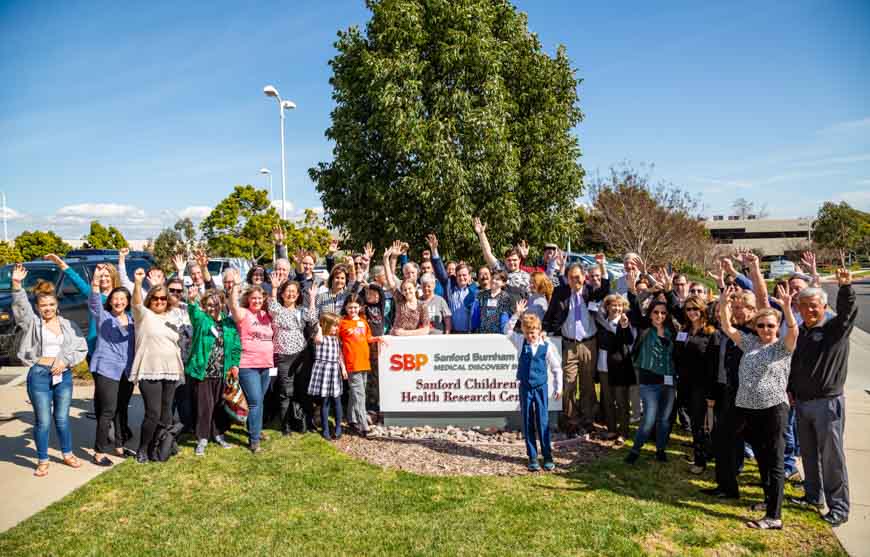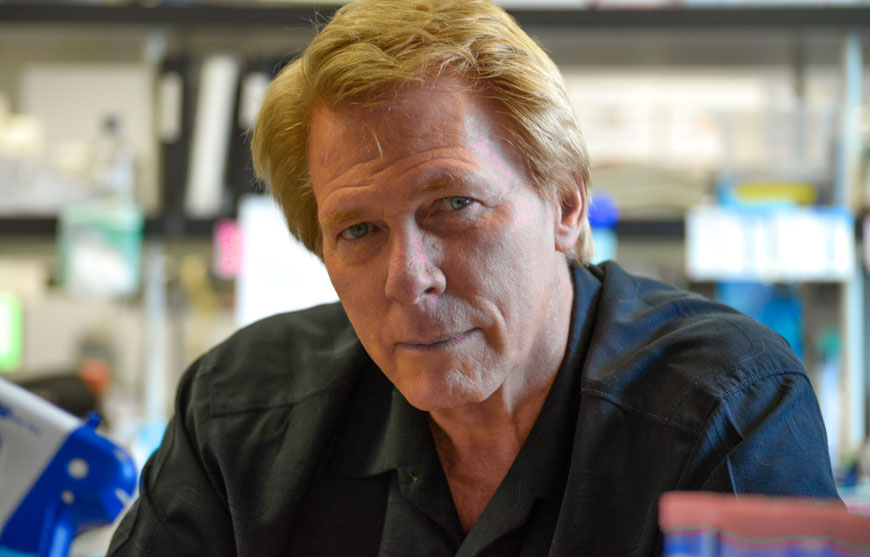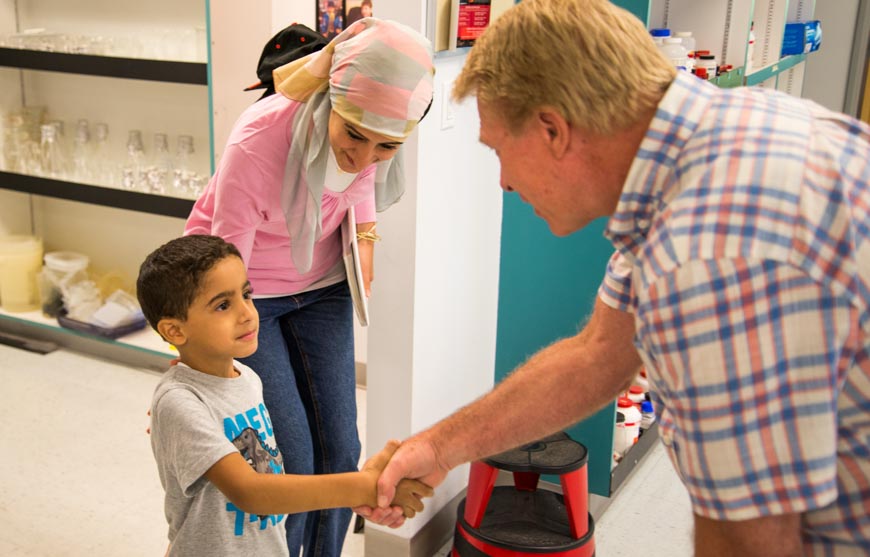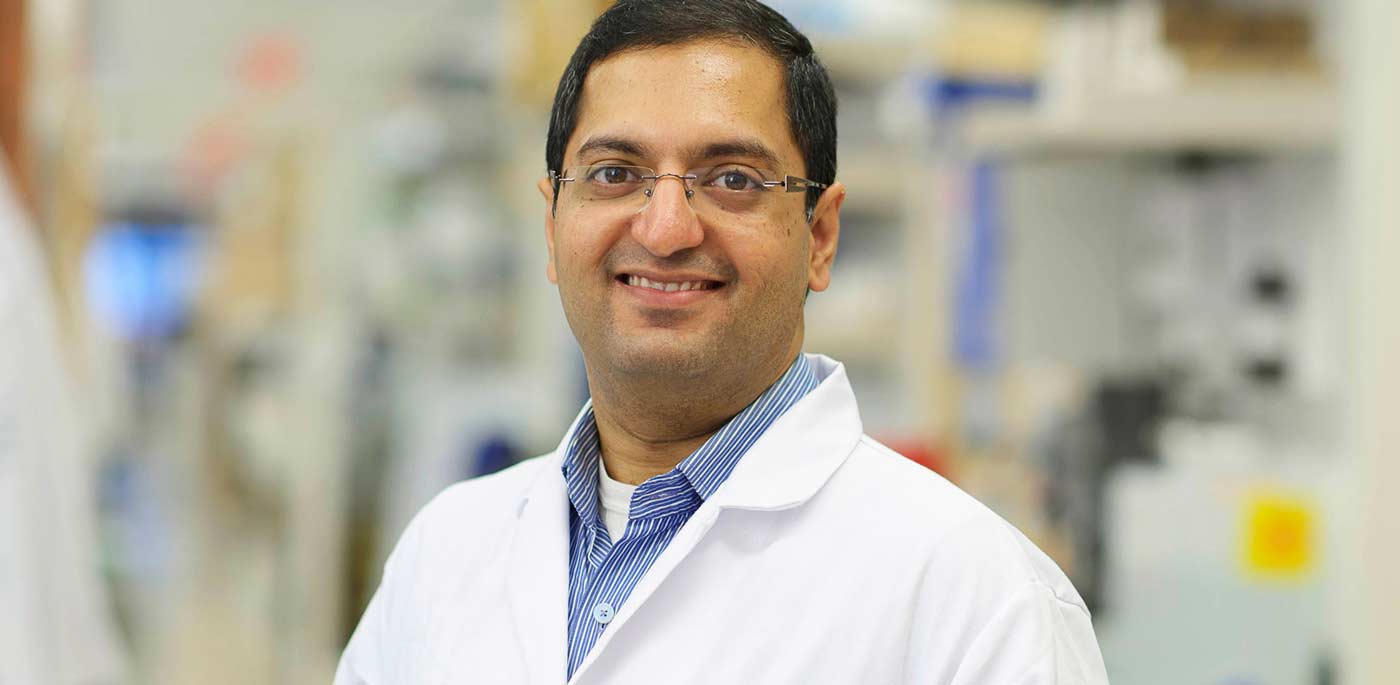The unofficial theme of Sanford Burnham Prebys’ 10th annual Rare Disease Day symposium can be summarized in one word: hope.
This year’s event focused on rare bone disorders and bone cancers, with a special emphasis on a condition called multiple hereditary exostoses (MHE) that causes numerous bone tumors in children. Until now, children with MHE had only one treatment option: repeated surgeries to remove these tumors.
Now, the first medicine, called palovarotene, that may be able to slow or halt this bone growth is being tested in a clinical trial—potentially saving these children from a lifetime of painful surgeries. Yu Yamaguchi, MD, PhD, symposium chair and professor in Sanford Burnham Prebys’ Human Genetics program, participated in the key research needed in order for the clinical trial to begin.
“For the first time, a diagnosis doesn’t feel like a life sentence,” says Greta Falkner, who attended the symposium with her 8-year-old son, Jackson Falkner. Jackson has MHE and has undergone 13 surgeries to date. “Today we have hope for a cure.”
The launch of a study evaluating palovarotene as an MHE treatment is the result of decades of hard work and collaboration between scientists, clinicians, Clementia Pharmaceuticals (now Ipsen) and the MHE Research Foundation—a patient advocacy and support group.
The symposium featured an all-star lineup of distinguished speakers in the field of skeletal biology and MHE research, including keynote speaker Henry Kronenberg, MD, of Massachusetts General Hospital and Maurizio Pacifici, PhD, of Children’s Hospital of Philadelphia, whose research formed the scientific rationale for the use of the drug in MHE. The event was sponsored by the MHE Research Foundation and Clementia Pharmaceuticals.
“We are so grateful that Sanford Burnham Prebys holds this Rare Disease Day symposium to bring together all the important players in rare disease drug discovery: scientists, doctors, families and drug companies. It is literally ‘bench to bedside’ at one event,” says Sarah Ziegler, who co-founded the MHE Research Foundation with Craig and Susan Eaton after Sarah’s son was diagnosed with MHE in 1993 (when little to no information was available on the disease). “Foundations like ours rely on the research of scientists like Drs. Yamaguchi and Pacifici to find new medicines for patients—and the arrival of the first potential treatment for MHE is the perfect example of the power of this research.”
Multiple parents and children with MHE, some of whom are enrolled in the clinical trial, attended the event. For most of these children, this was the first time they’d met another person with their condition.
Interested in keeping up with SBP’s latest discoveries, upcoming events and more? Subscribe to our monthly newsletter, Discoveries.





